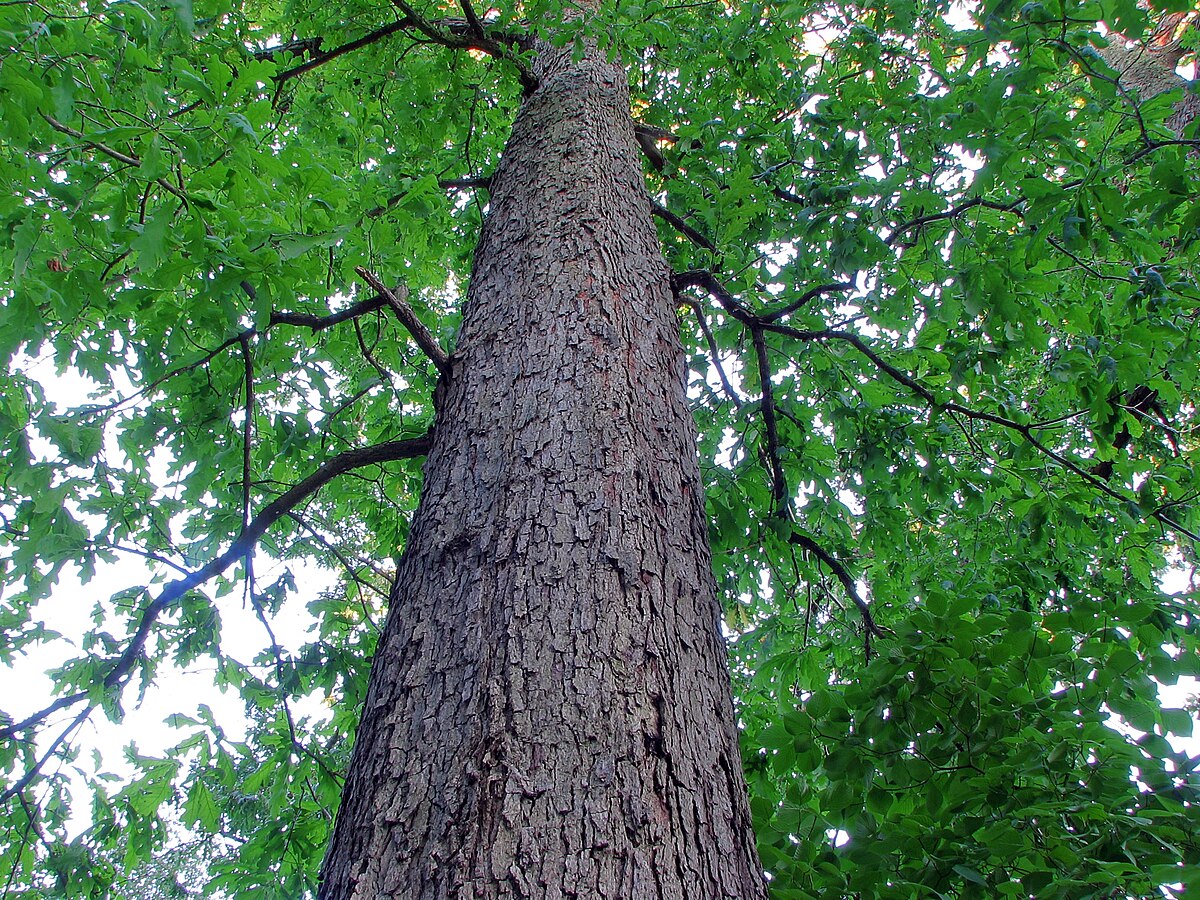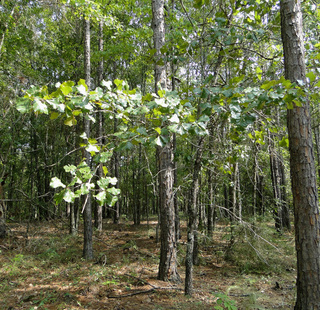What Does Blackjack Oak Look Like



- Craggy blackjack oak produces acorns every two years. And more like a big bush than a tree. The trees look quite a bit different from their relatives, and given enough time.
- Blackjack oak (Quercus marilandica) 7 Shingle oak (Quercus imbricaria) 8 Upland White Oaks 8 White oak (Quercus alba) 8 Chestnut oak (Quercus montana) 9 Post oak (Quercus stellata) 10 Chinquapin oak (Quercus muehlenbergii) 10 Bottomland Red Oaks 11 Pin oak (Quercus palustris) 11 Water oak (Quercus nigra) 11 Cherrybark oak (Quercus pagoda) 12.
- Propagating Oak Trees. For convenience, the many species of oak are divided into two main groups: red oaks and white oaks. You can tell which group an oak belongs to by taking a close look at the leaves. Red oak leaves have pointed lobes with little bristles at the tips, while the lobes on white oak leaves are rounded.
Eastern White Oak (Quercus alba)This species is very large but sometimes not as tall as other oaks. Heights range from 60 to 150 feet and generally depend on the environment each tree grows in. Open spaces allow the eastern white oak to branch out and develop a wide silhouette, whereas those growing in a denser forest tend to become taller.
The University of Arkansas System Division of Agriculture does not promote, support or recommend plants featured in 'Plant of the Week.' Please consult your local Extension office for plants suitable for your region.
Blackjack Oak
Latin: Quercus marilandica
This summer’s drought has been tough on trees. The drive between Fayetteville and Little Rock is punctuated with whole hillsides of brown and seemingly lifeless trees.
While these trees - mostly oaks, hickories, dogwoods and elms - look bad from a distance, most will survive the rigors of the 2000 drought without much problem. Summers like this help one appreciate the really tough trees such as the blackjack oak.
A kid I knew in my youth was scrappy and always getting into fights. His favorite saying was, 'When you’re ugly you gotta be tough.' Mother Nature has applied this simple truism to the blackjack oak because it is one ugly, but tough tree.
Blackjacks are found throughout most of the eastern woodlands, occupying sites with soil too poor or dry for oaks with more stature and substance to flourish. It was one of the few tree species to venture onto the Great Plains before white settlement, occupying a region from central Texas northeast through Oklahoma known as the cross timber region.
The blackjack is a small, gnarly tree usually under 35 feet tall with a round crown and leathery, three-lobed leaves. It is a member of the red oak tribe and has the characteristic leaf spine at the end of each lobe. The leaves hang on the tree through the winter to be pushed off by new leaves the following spring. It’s trunk is often deeply furrowed and black, giving it a brooding wintertime appearance.
The Rodney Dangerfield of oaks, blackjacks are given but one use - firewood - by most authors who seem overly hung up on the notion that all oaks reach the pinnacle of their glory at the saw mill.
It might be instructive to speculate on the long term effects of this summer’s drought on the survival and health of the forest. As bad as the trees look, most will survive the drought because they have been forced into an early dormancy to conserve water.
Unfortunately, that is not the end of the story. The oaks of our eastern forest are systemically infected with a fungus called Hypoxylon canker - sort of the athlete’s foot of the oak kingdom.
Survey work conducted by Dr. Pat Finn at the UofA following the severe drought of 1980 showed that about 80 percent of the oaks of northwest Arkansas have this systemic infection. This fungus is usually benign and does no apparent harm, but droughts cause it to flare up. Certain trees -- with no discernable pattern -- are killed by the multiplying hyphae of the fungus as it produces its spores on fungal mats under the bark of the tree. These fungal mats push the bark off which accumulates at the base of the tree like a rain of deadly dandruff.
For the health of the forest, Hypoxylon is a beneficial fungus because it thins the stand of trees. In 1980, the disease killed about 12 percent of the oaks in some areas, thus allowing the survivors more opportunity to obtain water.
Unfortunately most of us that build our homes in the woodland have difficulty taking the long view on ecology when the tree in front of our house is the one that dies. About all that can be done to ward off the effects of this problem is to keep the drought at bay by watering before conditions become too severe.
Blackjacks are not in the nursery trade and many who have them on their property treat them with little respect. But, before dismissing this tough tree as a scrub oak and relegating it to the woodpile, reflect on its toughness and adaptability under adverse conditions.
By: Gerald Klingaman, retired
Extension Horticulturist - Ornamentals
Extension News - September 22, 2000
What Does Blackjack Oak Look Like Look

The University of Arkansas Division of Agriculture does not maintain lists of retail outlets where these plants can be purchased. Please check your local nursery or other retail outlets to ask about the availability of these plants for your growing area.
The University of Arkansas System Division of Agriculture does not promote, support or recommend plants featured in 'Plant of the Week.' Please consult your local Extension office for plants suitable for your region.
Blackjack Oak
Latin: Quercus marilandica
This summer’s drought has been tough on trees. The drive between Fayetteville and Little Rock is punctuated with whole hillsides of brown and seemingly lifeless trees.
While these trees - mostly oaks, hickories, dogwoods and elms - look bad from a distance, most will survive the rigors of the 2000 drought without much problem. Summers like this help one appreciate the really tough trees such as the blackjack oak.
A kid I knew in my youth was scrappy and always getting into fights. His favorite saying was, 'When you’re ugly you gotta be tough.' Mother Nature has applied this simple truism to the blackjack oak because it is one ugly, but tough tree.
Blackjacks are found throughout most of the eastern woodlands, occupying sites with soil too poor or dry for oaks with more stature and substance to flourish. It was one of the few tree species to venture onto the Great Plains before white settlement, occupying a region from central Texas northeast through Oklahoma known as the cross timber region.
The blackjack is a small, gnarly tree usually under 35 feet tall with a round crown and leathery, three-lobed leaves. It is a member of the red oak tribe and has the characteristic leaf spine at the end of each lobe. The leaves hang on the tree through the winter to be pushed off by new leaves the following spring. It’s trunk is often deeply furrowed and black, giving it a brooding wintertime appearance.
The Rodney Dangerfield of oaks, blackjacks are given but one use - firewood - by most authors who seem overly hung up on the notion that all oaks reach the pinnacle of their glory at the saw mill.
It might be instructive to speculate on the long term effects of this summer’s drought on the survival and health of the forest. As bad as the trees look, most will survive the drought because they have been forced into an early dormancy to conserve water.
Unfortunately, that is not the end of the story. The oaks of our eastern forest are systemically infected with a fungus called Hypoxylon canker - sort of the athlete’s foot of the oak kingdom.
Survey work conducted by Dr. Pat Finn at the UofA following the severe drought of 1980 showed that about 80 percent of the oaks of northwest Arkansas have this systemic infection. This fungus is usually benign and does no apparent harm, but droughts cause it to flare up. Certain trees -- with no discernable pattern -- are killed by the multiplying hyphae of the fungus as it produces its spores on fungal mats under the bark of the tree. These fungal mats push the bark off which accumulates at the base of the tree like a rain of deadly dandruff.
For the health of the forest, Hypoxylon is a beneficial fungus because it thins the stand of trees. In 1980, the disease killed about 12 percent of the oaks in some areas, thus allowing the survivors more opportunity to obtain water.
Unfortunately most of us that build our homes in the woodland have difficulty taking the long view on ecology when the tree in front of our house is the one that dies. About all that can be done to ward off the effects of this problem is to keep the drought at bay by watering before conditions become too severe.
Blackjacks are not in the nursery trade and many who have them on their property treat them with little respect. But, before dismissing this tough tree as a scrub oak and relegating it to the woodpile, reflect on its toughness and adaptability under adverse conditions.
By: Gerald Klingaman, retired
Extension Horticulturist - Ornamentals
Extension News - September 22, 2000
What Does Blackjack Oak Leaves Look Like
The University of Arkansas Division of Agriculture does not maintain lists of retail outlets where these plants can be purchased. Please check your local nursery or other retail outlets to ask about the availability of these plants for your growing area.